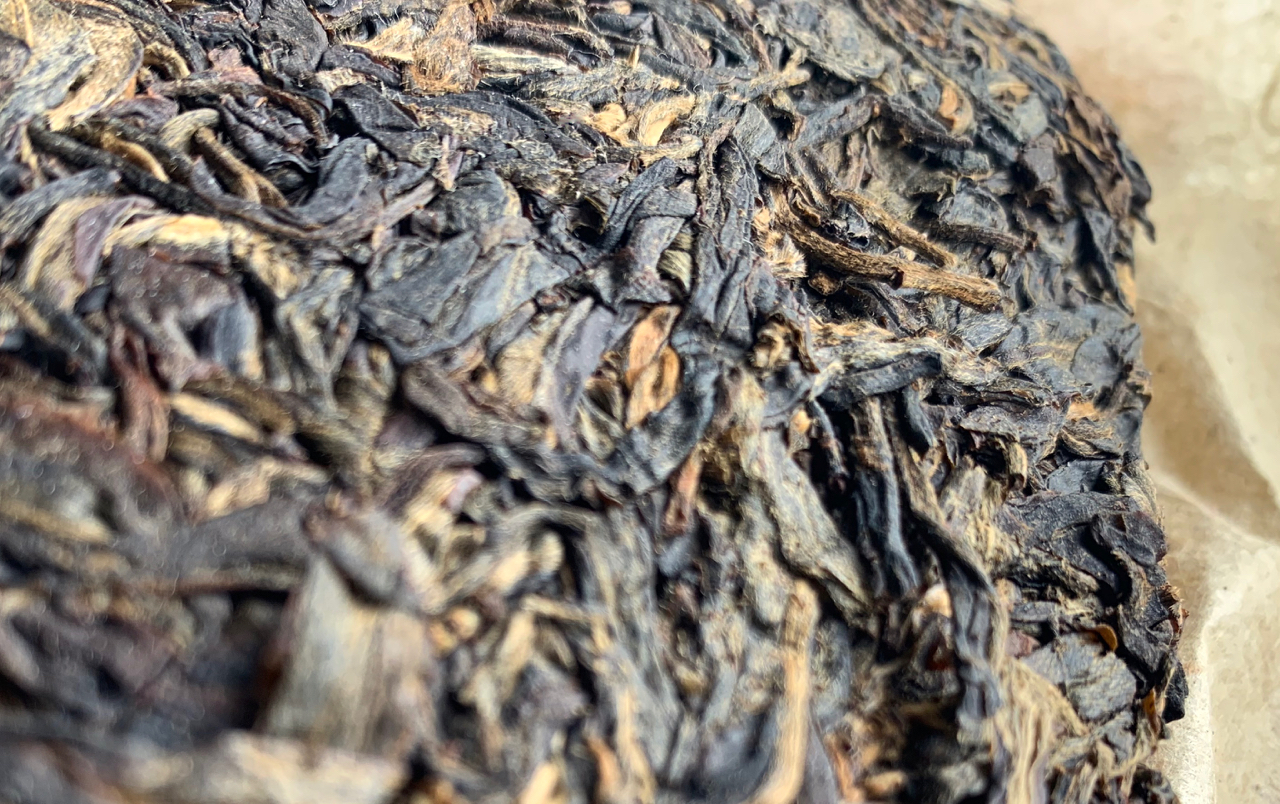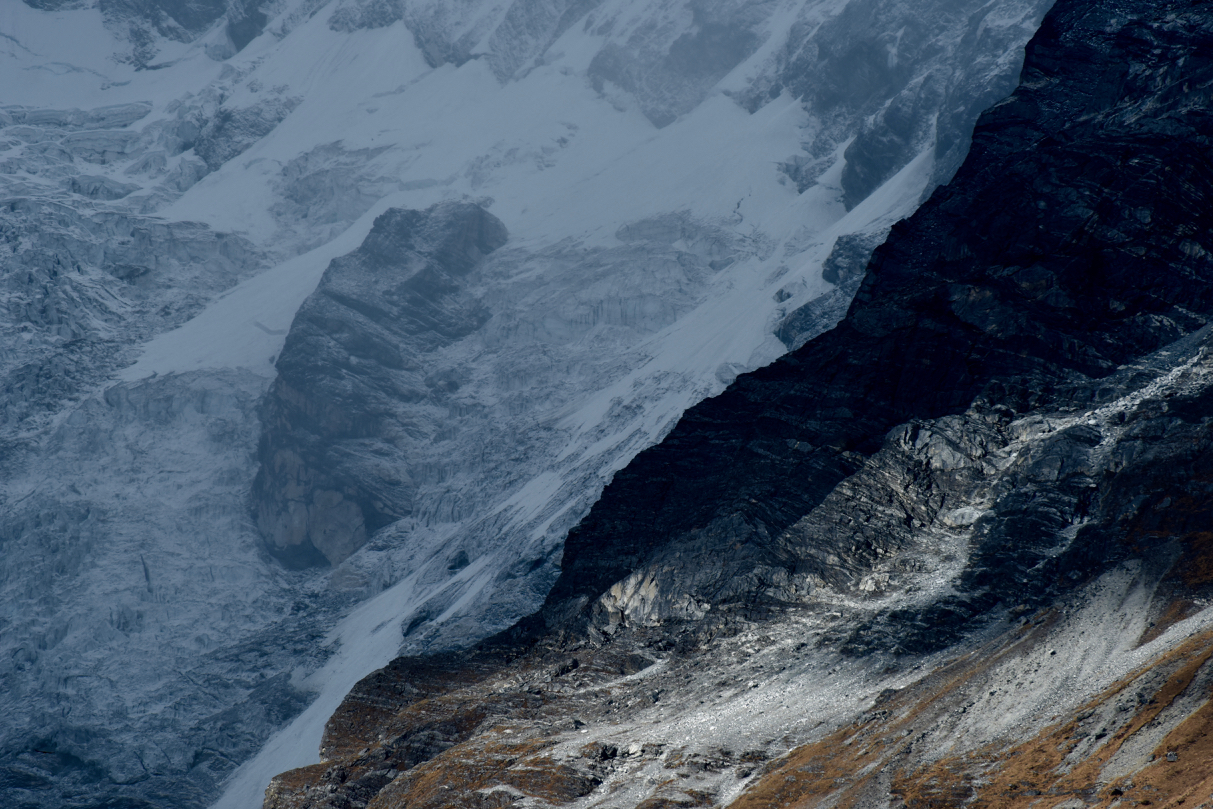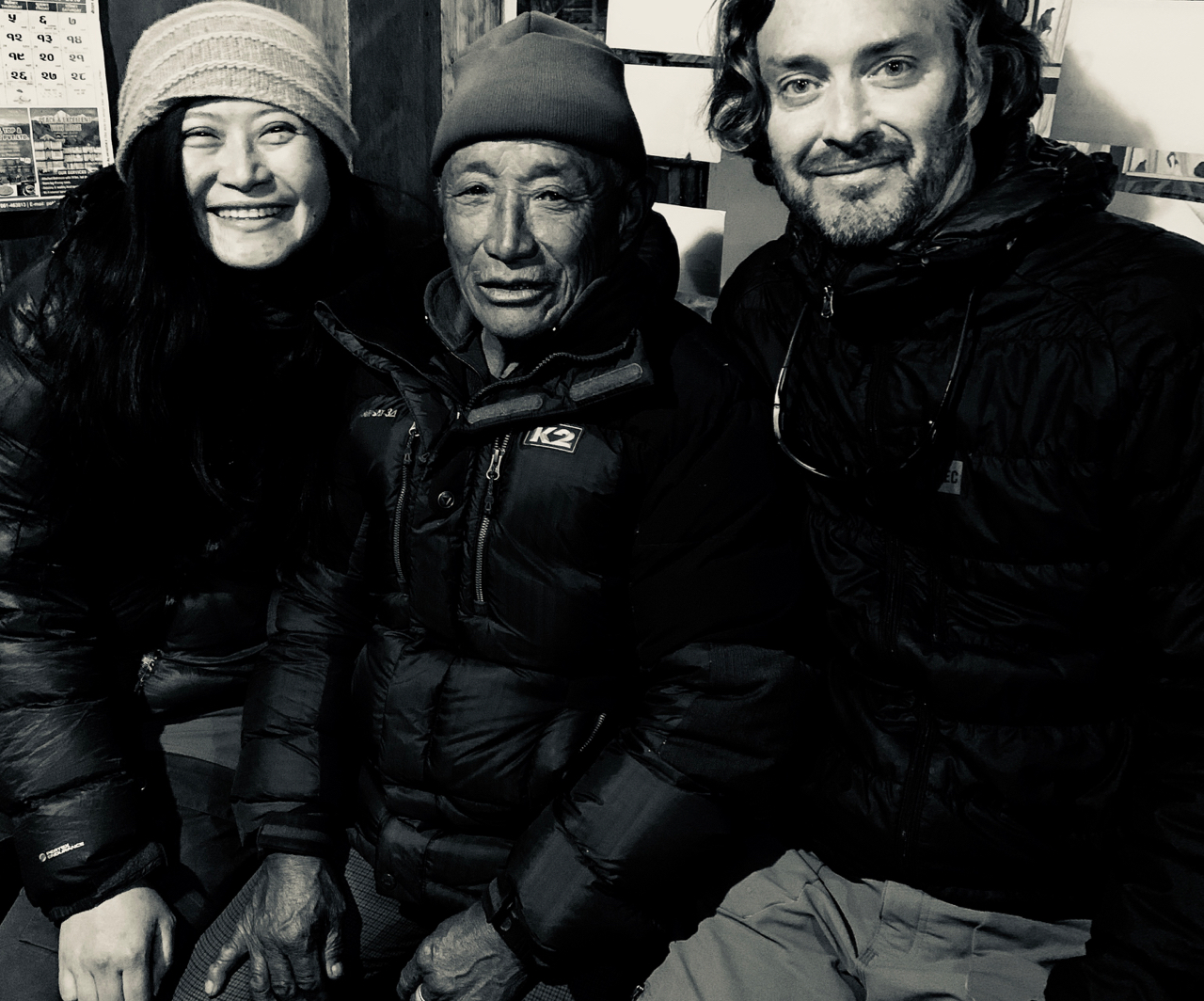Perceptions are everything and here there is so very much within sensing distance. Syabrubesi is a dusty gateway that lies behind us. We head west through green tree lines of pine, birch, and rhododendron and nettles. The Buddhist sage and one of most provocative characters in Himalayan lore, Milarepa, is said to have gone entirely green during his meditations on a diet exclusively made up of nettles.
Up we head and the air eases into something colder, harder and clearer. Gone are the scents of soil and moss and more there is an edge that rifles up into the sinuses. Still more tree lines with the birch disappearing altogether at one point. They seem at odds with the place, standing in a deliberate forest all on their own, too clean and orderly they seem. The Langtang River smothers and smashes its way east pulled onwards and different rhododendron infuse spaces, seemingly everywhere. Our resident medicine man Mingmar is giddy with what grows and what he recognizes uses for…which is almost everything. He grew up north of us across the border in the very nearby Tibet, though so much is similar there in dialect and culture that the term ‘border’ seems cruel.
He is a burrowing presence for much of our journey thus far, rooting around, collecting, explaining and stuffing the different items in his bag.

My own clump of necessity and ‘medicine’ – a robust He Kai Sheng Puerh. Treated like a last panacea I used the leaves sparingly, though they began each and every single day on the journey.
Langtang (literally “Ox’s place or Ox’s grassland) is a simple to access valley. Six hours from Kathmandu and yet north just kilometres away is the official border with Tibet. Fallow fields lie within stone fence lines hinting at what once was. Mingmar constantly wonders aloud why there isn’t any sign of life within. “They have forgotten”, he says at one point. Tourism runs much of the Lantang and this (from Mingmar’s perspective) is dangerous dependency.
We move as a team of seven to document what we can of glaciers, the mountains, and the locals’ observations of them. This region knows only too well of the interconnectedness of nature and mortals. During the hugely destructive earthquake of 2015 in Nepal, the shaking set off a horrific avalanche that plunged down into and onto the valley and village of Langtang – more than 300 lives were lost.
Our team of seven includes the effervescent Pasang Sherpa who has been with me on several journeys, Mingmar Tsering Lama (Mr. Medicine) who has long been known to me though this is the first journey together in the flesh and two Dawa Sherpa’s.
The younger and broader of the two carries a face that varies between childhood dreaming and an uncle’s frowns. The elder is one of those elegant souls that the mountains often produce, in seeming contrast to the daunting terrain. Lean and fine boned he is perhaps the strongest of us all while being mild and brimming with manners.
Debra Tan joins me once again in documenting locals’ views of the environment and along with us is Amy Sellmyer, who has proven to be an enlightened mountain being of easy needs and grinding toughness.
As with many of the last journeys into the mountains two things remain identical: I have loads of tea to fuel me/us/whomever, and we come to document the locals’ views; those who live and breath within these Himalayan Water Towers that feed so much of Asia’s fresh water sources.
We come to sit, listen and observe those, who’s agenda’s on climate are uncomplicated. Living on the very frontline of a potent and sensitive ‘Nature’, they breath in change with lungs and watch it with eyes, rather than read about it.
As always too, we move with the good graces of the mountain fates.
Waking one day to find pieces of small ice particles popping on our jackets, Mingmar digs deep beneath a long copper coloured stalk into the semi-frozen earth. Offering up a curled white root he smiles, “This is good for the man’s ‘thing’”. I shudder, he smiles, and we all continue upwards…ever upwards towards a village that was erased by an avalanche, Langtang.










